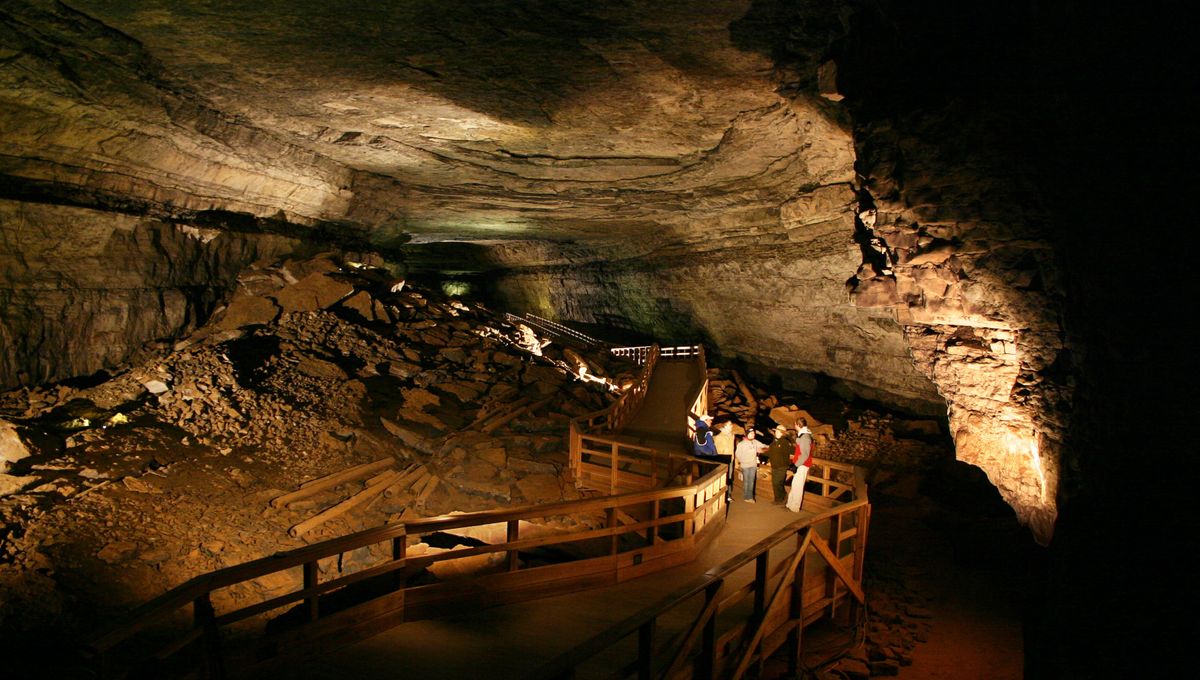
Embedded in a cave wall deep underneath Kentucky, archeologists found the remains of a colossal shark that cruised some 330 million years ago. The cave might be a long way from the ocean today, but the discovery shows that this part of North America was once riddled with sharks.
In 2020, a field team from Maryland-National Capital Park and Planning Commission’s Dinosaur Park discovered parts of a fossilized shark skull in the Mammoth Cave National Park, the world’s longest-known cave system that extends for at least 643 kilometers (400 miles).
This was far from the first evidence of sharks in this cave system. The Mammoth Cave National Park Fossil Shark Research Project had already discovered over 100 individual shark specimens here. Most of this evidence came in the form of teeth, which tend to stay very well preserved over the course of millennia as they’re made out of the super-tough substance calcium phosphate.
A skull, on the other hand, is a much rarer discovery because shark skeletons are made of cartilage, not bone.
The fossilized remains included a lower jaw, some cranial cartilage, and several teeth. The shark, thought to be an extinct species known as Saivodus striatus, was about the size of a modern-day Great White, between 3.4 to 4 meters (11 to 13 feet) long.
“The preservation of these shark fossils is superb,” the Mammoth Cave National Park Fossil said in a Facebook post.
“Because the cave is not exposed to external elements such as rain, snow, and wind, the rate of erosion of the limestone in the cave is slow so fossils tend to be very detailed and mostly intact.”
Sharks lived in this area around 330 million years ago. Sometimes known as the Late Mississippian period, this was a time when much of the Mississippi River valley was submerged underwater, extending roughly from 358.9 to 323.2 million years ago. As a result, you can find a surprising amount of marine fossils in the area, despite it being some 850 kilometers (528 miles) from the modern-day coastline.
Sharks have been around for at least 450 million years – that’s older than trees and dinosaurs. While the discovery of ancient sharks in the Mississippi River valley might not be totally surprising, this new discovery is challenging some of our knowledge of this mysterious period in North America.
“There’s hardly ever any record at all of sharks teeth coming from these rocks. So that was exciting,” John-Paul Hodnett, a paleontologist and program coordinator at Dinosaur Park in Maryland, told CNN. “So this is a brand new record of sharks from a particular layer of time.”
An earlier version of this article was published in January 2022.
Source Link: A Giant Shark Skull Has Lurked In This Ancient Cave For 330 Million Years